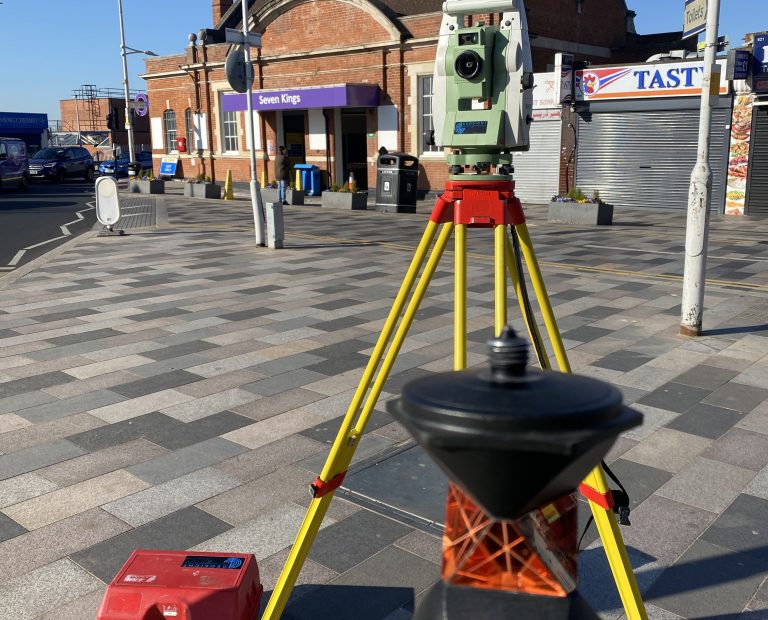Necessary Tools and Methods in Laying Out Engineering
The discipline of setting out design depends greatly on a suite of vital tools and methods that underpin the precision and effectiveness of task implementation. What effects does this hold for future engineering methods?
The Relevance of Accurate Dimensions

The value of accurate measurements expands beyond plain compliance; they are indispensable to the general efficiency of design procedures. Inaccuracies can cause material waste, task delays, and enhanced labor prices, eventually affecting the job's profits. Specific measurements enhance the high quality of the final item, making certain that it performs as meant and satisfies the assumptions of stakeholders.
Additionally, the relevance of exact dimensions appears in numerous engineering self-controls, including civil, mechanical, and electrical engineering. Each area requires an unique approach to measurement, yet the underlying requirement for precision stays continuous. As projects become progressively complicated, the reliance on accurate dimensions will only magnify, highlighting the need for consistent improvements in dimension methods and innovations. Hence, cultivating a society that focuses on accuracy is important for the future of engineering.
Crucial Devices for Laying Out
Laying out, a crucial stage in the engineering and building procedure, depends greatly on particular tools that make sure accurate place and placement of frameworks. Among these tools, the land surveyor's level sticks out, supplying precise horizontal dimensions important for developing referral factors. This tool enables engineers to figure out altitude changes and maintain harmony throughout the job site.
The total amount station is one more essential tool, incorporating electronic distance measurement with angular dimension abilities. This technology boosts efficiency and accuracy in catching spatial data, permitting for effective site design and preparation.
Furthermore, making use of measuring tapes and marking tools, such as chalk lines or risks, is fundamental for briefly noting limits and crucial points on the site. These fundamental tools, though basic, are important for guaranteeing clear interaction amongst the construction group relating to task requirements.
Lastly, GPS modern technology has gotten grip in laying out processes, offering real-time placing information and substantially boosting accuracy over standard approaches. Collectively, these crucial tools create the backbone of effective setting out practices, eventually adding to the successful execution of design and building and construction tasks.
Advanced Evaluating Strategies
Advanced evaluating strategies play a crucial duty in improving the precision and effectiveness of engineering projects. These strategies include a variety of techniques that give precise data for layout and construction. Standard methods, such as progressing and triangulation, have evolved into much more advanced methods, consisting of Overall Station studies and Worldwide Navigation Satellite Equipment (GNSS)
Overall Station tools integrate digital theodolites with distance dimension capacities, enabling land surveyors to gather precise location data with fantastic rate. This innovation substantially lowers errors related to manual dimensions and gives real-time information handling. GNSS supplies exceptional precision for large-scale tasks by using satellite signals to determine precise positioning, which is essential for guaranteeing and lining up frameworks compliance with style specs.
Along with these devices, progressed techniques likewise include geospatial evaluation and 3D modeling. These approaches make it possible for designers to imagine terrain and site conditions much more effectively, helping with much better decision-making during click here to read the planning phase. By utilizing these sophisticated checking methods, engineering jobs can accomplish better accuracy in design, decrease rework, and inevitably boost total task success.
Digital Modern Technology in Engineering
The integration of digital technology has actually revolutionized design techniques, boosting both efficiency and accuracy across various self-controls. Tools such as Structure Details Modeling (BIM) promote the visualization and administration of complicated jobs, allowing designers to team up seamlessly and make educated choices. This modern technology enables the creation of detailed 3D models, which can be evaluated for architectural integrity and performance before construction begins.

The application of expert system and machine understanding in engineering procedures better improves anticipating upkeep and optimization of sources. These modern technologies make it possible for the analysis of huge data collections, causing far better forecasting and boosted task outcomes. Overall, electronic technology is reshaping the design landscape, driving development, and ensuring that tasks are finished with better effectiveness and reduced danger. As the industry continues to advance, welcoming these tools will certainly be vital for future success.
Finest Practices for Application
When applying electronic technology in engineering, it is crucial to develop a calculated strategy that aligns with project goals and business capacities. A comprehensive evaluation of existing process and modern technology framework is vital to determine voids and opportunities for enhancement. Engaging stakeholders early while doing so promotes partnership and makes sure that the modern technology meets user needs.

Task supervisors should adopt a repetitive execution approach, permitting modifications based upon real-time comments and performance analyses. This dexterous approach not only reduces dangers yet additionally advertises continual enhancement by including lessons discovered.
Verdict
Finally, the integration of necessary devices and progressed strategies in laying out design is crucial for making certain precision in dimensions and effective job implementation. Employing instruments such as surveyor's levels, complete terminals, and GPS innovation, together with contemporary surveying methods, improves precision and minimizes the possibility of errors. Adopting ideal techniques in execution better enhances these processes, ultimately cultivating improved task results in the engineering and construction sectors.
The technique of setting out engineering relies greatly on a collection of important devices and methods that underpin the precision and performance of project execution.Furthermore, the relevance of accurate measurements is apparent in various design techniques, consisting of civil, mechanical, and electrical engineering. By employing these innovative surveying methods, engineering jobs can attain higher accuracy in layout, reduce rework, and ultimately boost total task success.
Overall, electronic innovation is reshaping the engineering landscape, driving technology, and ensuring that tasks are completed with blog better effectiveness and minimized threat (setting out engineering).In conclusion, the assimilation of necessary devices and advanced strategies in setting out design is crucial for making certain precision in measurements and effective task implementation